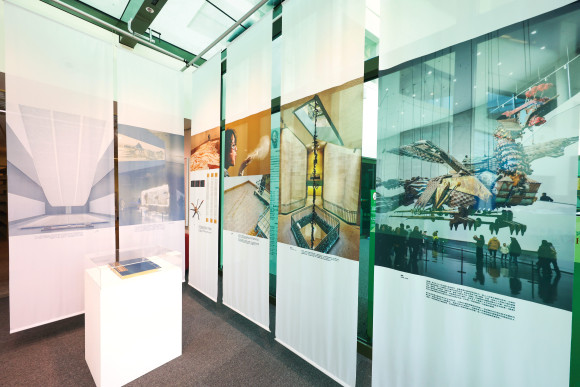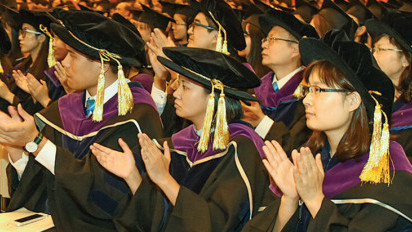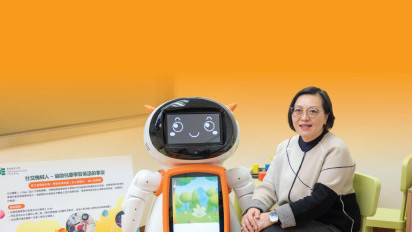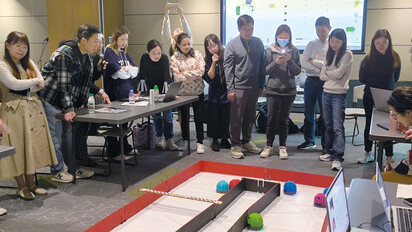As one of the most creative and influential artists of our time, Professor Xu Bing adeptly employs a variety of media to explore the essence of art and civilisation, addressing social issues through his creations. In March this year, he was invited to be Visiting Professor at the Department of Cultural and Creative Arts at The Education University of Hong Kong. His appointment also marks the launch of the one-year ‘Where Sky and Earth Meet’ Space Art Education programme, under which EdUHK students can participate in moving image creation and have their select works sent into outer space.
After graduating from the Central Academy of Fine Arts in Beijing, Professor Xu moved to the United States in the 1990s, where he began to explore words and calligraphy in an environment where Chinese and Western cultures intersect. He ended up creating the renowned Square Word Calligraphy, which integrates Chinese calligraphy with the English alphabet. Over the decades, he has navigated the realms of tradition and modernity, continuously reflecting on the boundaries of art. Last year, he led the official launch of the SCA-1 art satellite, marking the beginning of his exploration into space art.
“I’d never thought my work could have had anything to do with outer space,” Professor Xu says, confessing his initial disinterest in this ‘high-level’ project. Further research with his team, however, convinced him that the merging of art and aerospace technology could extend one’s horizon to outer space, affording unique perspectives from beyond Earth. This could, in turn, inspire new philosophies for addressing terrestrial issues, or effective ways of tackling them.
In addition to being an artist, Xu is also a teacher. The rise of AI has not only transformed daily life but also significantly impacted education. “This generation of students has stronger learning and knowledge acquisition abilities than I did,” he reflects, acknowledging the challenge of keeping pace with ever-evolving tools and knowledge. Nonetheless, he embraces technology, especially for the way AI enables him to discern what is truly valuable in life beyond mere visuals or innovations.
In light of concerns from some artists about being replaced by AI, Professor Xu argues that AI actually helps clarify the distinction between technology and art, amid the bulk of our past artistic creations and all that we taught our students. “What AI ultimately explores are human thinking patterns, such as how humans work and how their brains work. Works co-created by humans remain irreplaceable,” he adds. “Today, I appreciate art more than ever, because as AI advances, the significance of art increases.”
As knowledge acquisition evolves, with people learning more from mobile devices than from museums, Xu is left to ponder: “What irreplaceable role will the University play in the future? That is one fundamental issue.”

Profile: |
|---|
1981 – Bachelor’s degree from the Central Academy of Fine Arts (CAFA), Beijing |
1990 – Visited the United States as an Honorary Artist |
1999 – MacArthur Fellowship (USA) |
2004 – Artes Mundi Prize (Wales) |
2007 – Lifetime Achievement Award (Southern Graphics Council) |
2007 – Appointed Vice President of the Central Academy of Fine Arts |
2018 – Xu Beihong Award (Central Academy of Fine Arts) |
2024 – Appointed as Ambassador for Cultural Promotion (Hong Kong)
|








